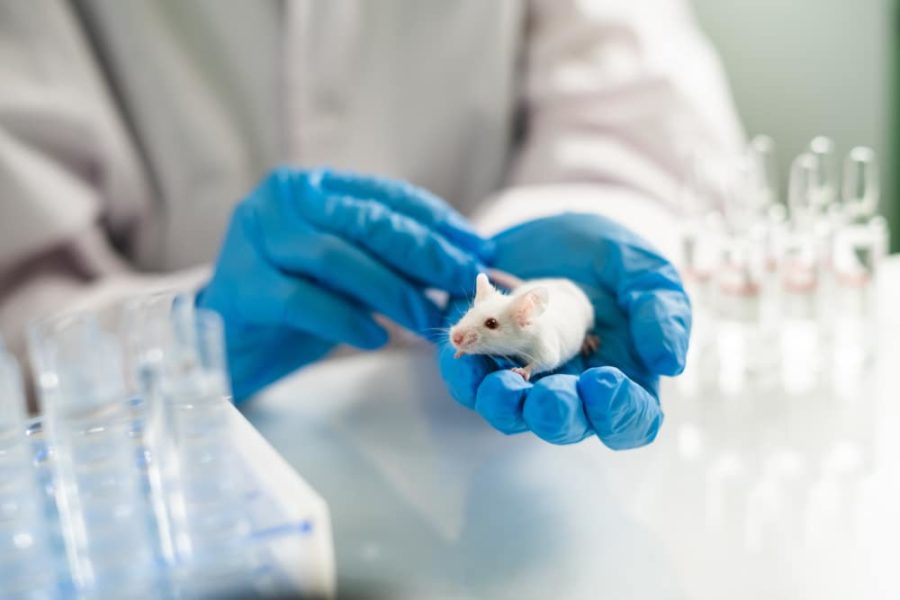CBGA More Effective For Seizures Than CBD, Study of Mice Finds
FeaturedTrending Stories October 6, 2021 MJ Shareholders 0

Researchers in Australia say they’ve discovered the “mother of all cannabinoids,” and it isn’t THC or CBD. For the first time, a study reports that three acidic cannabinoids found in cannabis, notably cannabigerolic acid (CBGA), reduced seizures in a mouse model of Dravet syndrome, an intractable form of child epilepsy.
The three acidic cannabinoids—CBGA, cannabidivarinic acid (CBDVA) and cannabigerovarinic acid (CBGVA)—”may contribute to the effects of cannabis-based products in childhood epilepsy,” and were noted with “anticonvulsant potential.” CBGA, however, demonstrated the most potential for certain anticonvulsant effects.
“From the early nineteenth century cannabis extracts were used in Western medicine to treat seizures but cannabis prohibition got in the way of advancing the science,” said Associate Professor Jonathon Arnold from the Lambert Initiative for Cannabinoid Therapeutics and the Sydney Pharmacy School. “Now we are able to explore how the compounds in this plant can be adapted for modern therapeutic treatments.” The study was recently published in the British Journal of Pharmacology.
CBGA is the precursor “granddaddy” molecule of CBDA and THCA, which eventually convert to THC and CBD, among other compounds. CBGA is part of a protective system for cannabis, produced by trichomes that triggers targeted plant cell necrosis—natural self-pruning to allow the plant to focus energy on the flower.
“We found that CBGA was more potent than CBD in reducing seizures triggered by a febrile event in a mouse model of Dravet syndrome,” Lead author of the study, Dr Lyndsey Anderson, said. “Although higher doses of CBGA also had proconvulsant effects on other seizure types highlighting a limitation of this cannabis constituent. We also found CBGA to affect many epilepsy-relevant drug targets.”
Fight Against Dravet Syndrome with CBGA
The mission for the team at the Lambert Initiative for Cannabinoid Therapeutics is simple: develop a better cannabis-based treatment for Dravet syndrome—an intractable form of child epilepsy.
In 2015, Barry and Joy Lambert made a hefty donation to the University of Sydney to push forward scientific research on medicinal cannabis. Barry and Joy’s granddaughter Katelyn suffers from Dravet syndrome.
“After using hemp oil for treatment, we got our daughter back. Instead of fearing constant seizures we had some hope that our daughter could have a life worth living. It was like the noise cleared from her mind and she was able to wake up. Today Katelyn really enjoys her life,” said Michael Lambert, Katelyn’s father.
In order to learn more, the research needs to be continual. “Our research program is systematically testing whether the various constituents of cannabis reduce seizures in a mouse model of Dravet syndrome,” said Associate Professor Jonathan Arnold. “We started by testing the compounds individually and found several cannabis constituents with anticonvulsant effects. In this latest paper we describe the anticonvulsant effects of three rarer cannabinoids, all of which are cannabinoid acids.”
The Entourage Effect
In the meantime, anecdotal evidence from cannabis consumers abroad suggests that there is more to cannabis’ healing powers than THC and CBD, although the science is limited.
Families like the Lamberts have noticed significant drops in seizures when children facing intractable epilepsy take cannabis extracts, although the source makes huge differences.
Supporting the concept of the Entourage Effect, there are unknown benefits from lesser known cannabinoids. Many people believe that the presence of terpenes and other compounds in cannabis make it more effective.
Harvard Professor, Dr. Lester Grinspoon, said that you need more than THC and CBD if you want cannabis’ full effects. It should be called the Ensemble Effect, not the Entourage Effect, he said. Dr. Grinspoon believed THC should be taken with CBD and other phytochemicals in order to be more effective. Any chemical in isolation does not perform the same way as it is found in nature, he believed.
Dr. Raphael Mechoulam is best known for his extensive work in cannabis acids, as well as Dr. Ethan Russo. In 1996, Japanese researchers found that CBGA is a precursor to CBDA and other compounds.
MJ Shareholders
MJShareholders.com is the largest dedicated financial network and leading corporate communications firm serving the legal cannabis industry. Our network aims to connect public marijuana companies with these focused cannabis audiences across the US and Canada that are critical for growth: Short and long term cannabis investors Active funding sources Mainstream media Business leaders Cannabis consumers











No comments so far.
Be first to leave comment below.